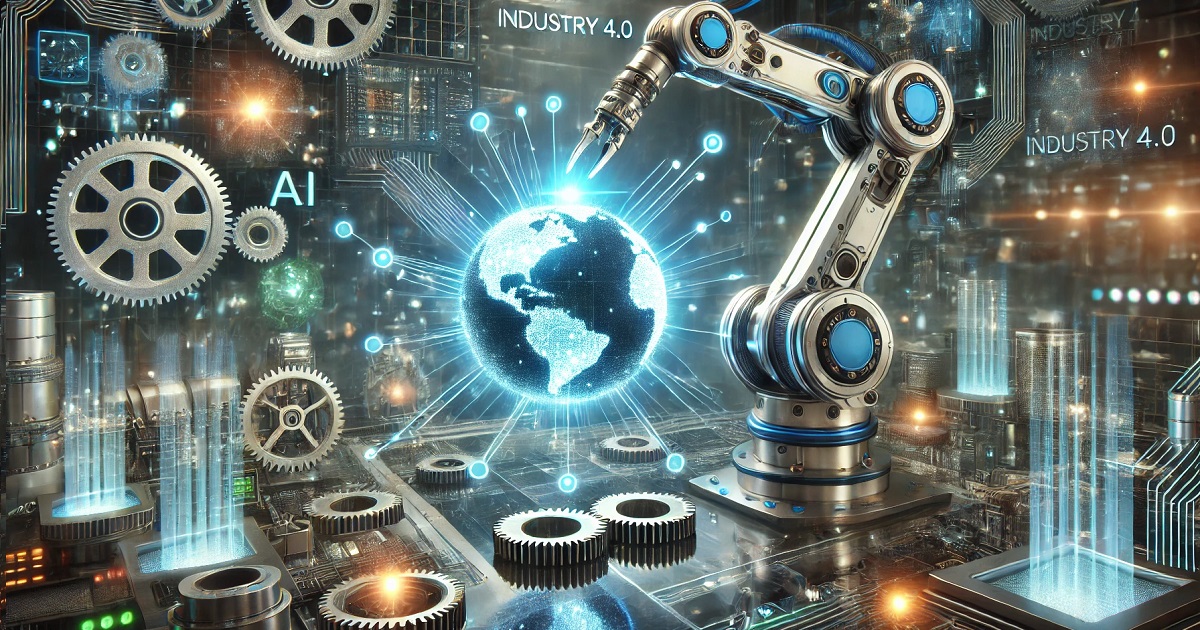Cyber-Physical Systems for Smart Manufacturing
A special issue of Applied Sciences (ISSN 2076-3417). This special issue belongs to the section "Applied Industrial Technologies".
Deadline for manuscript submissions: 10 April 2026 | Viewed by 7335

Special Issue Editors
Interests: cyber-physical production systems; mechatronic systems; additive manufacturing; reverse engineering; Industry 4.0
Interests: modeling and optimization of processes; machine tools; application of evolutionary algorithms and other natural-based algorithms; process efficiency; energy savings in production processes
Special Issues, Collections and Topics in MDPI journals
Special Issue Information
Dear Colleagues,
The ongoing industrial revolution, known as Industry 4.0, is bringing about significant changes in manufacturing processes through the adoption of cyber-physical systems (CPSs). These systems, which integrate physical manufacturing processes with intelligent computational technologies, enable dynamic adaptation, operational optimization, and improved responsiveness to changes. CPSs thus enhance the efficiency, flexibility, and resilience of manufacturing systems.
This Special Issue invites researchers and professionals to contribute articles that explore various aspects of cyber-physical systems within the context of smart manufacturing. The contributions should focus on the following areas:
- Development and Simulation: Papers addressing the modeling and simulation of CPSs in manufacturing, with an emphasis on the integration between cyber and physical components to improve system performance.
- Advanced Control Methods: Research showcasing new approaches to automation and control of manufacturing systems, including the use of artificial intelligence to enhance autonomy and process optimization.
- Digital Transformation of Manufacturing: Articles discussing the transformation of traditional manufacturing processes into digitally-driven systems, focusing on human–machine collaboration and the adaptation of job roles.
- Integration and Interoperability: Research exploring challenges and solutions in integrating CPSs with existing manufacturing structures, including the standardization of communication protocols and data exchange.
- Practical Applications and Validation: Case studies and experimental research that demonstrate successful CPS implementations in real-world manufacturing environments, revealing key challenges and lessons learned.
- Future Directions: Discussions on the latest trends in CPS development for smart manufacturing, including the development of new technologies and methods to support sustainable industrial growth.
With this Special Issue, we aim to foster the exploration and development of cyber-physical systems that will contribute to the advancement of smart manufacturing and enable a more efficient, adaptable, and sustainable industry of the future.
Dr. Elvis Hozdić
Prof. Dr. Zoran Jurković
Guest Editors
Manuscript Submission Information
Manuscripts should be submitted online at www.mdpi.com by registering and logging in to this website. Once you are registered, click here to go to the submission form. Manuscripts can be submitted until the deadline. All submissions that pass pre-check are peer-reviewed. Accepted papers will be published continuously in the journal (as soon as accepted) and will be listed together on the special issue website. Research articles, review articles as well as short communications are invited. For planned papers, a title and short abstract (about 250 words) can be sent to the Editorial Office for assessment.
Submitted manuscripts should not have been published previously, nor be under consideration for publication elsewhere (except conference proceedings papers). All manuscripts are thoroughly refereed through a single-blind peer-review process. A guide for authors and other relevant information for submission of manuscripts is available on the Instructions for Authors page. Applied Sciences is an international peer-reviewed open access semimonthly journal published by MDPI.
Please visit the Instructions for Authors page before submitting a manuscript. The Article Processing Charge (APC) for publication in this open access journal is 2400 CHF (Swiss Francs). Submitted papers should be well formatted and use good English. Authors may use MDPI's English editing service prior to publication or during author revisions.
Keywords
- cyber-physical systems (CPSs)
- smart manufacturing
- Industry 4.0
- automation and control
- digital and cybernetic transformation
- simulation and modeling
- artificial intelligence in manufacturing
- human–machine collaboration
Benefits of Publishing in a Special Issue
- Ease of navigation: Grouping papers by topic helps scholars navigate broad scope journals more efficiently.
- Greater discoverability: Special Issues support the reach and impact of scientific research. Articles in Special Issues are more discoverable and cited more frequently.
- Expansion of research network: Special Issues facilitate connections among authors, fostering scientific collaborations.
- External promotion: Articles in Special Issues are often promoted through the journal's social media, increasing their visibility.
- Reprint: MDPI Books provides the opportunity to republish successful Special Issues in book format, both online and in print.
Further information on MDPI's Special Issue policies can be found here.






